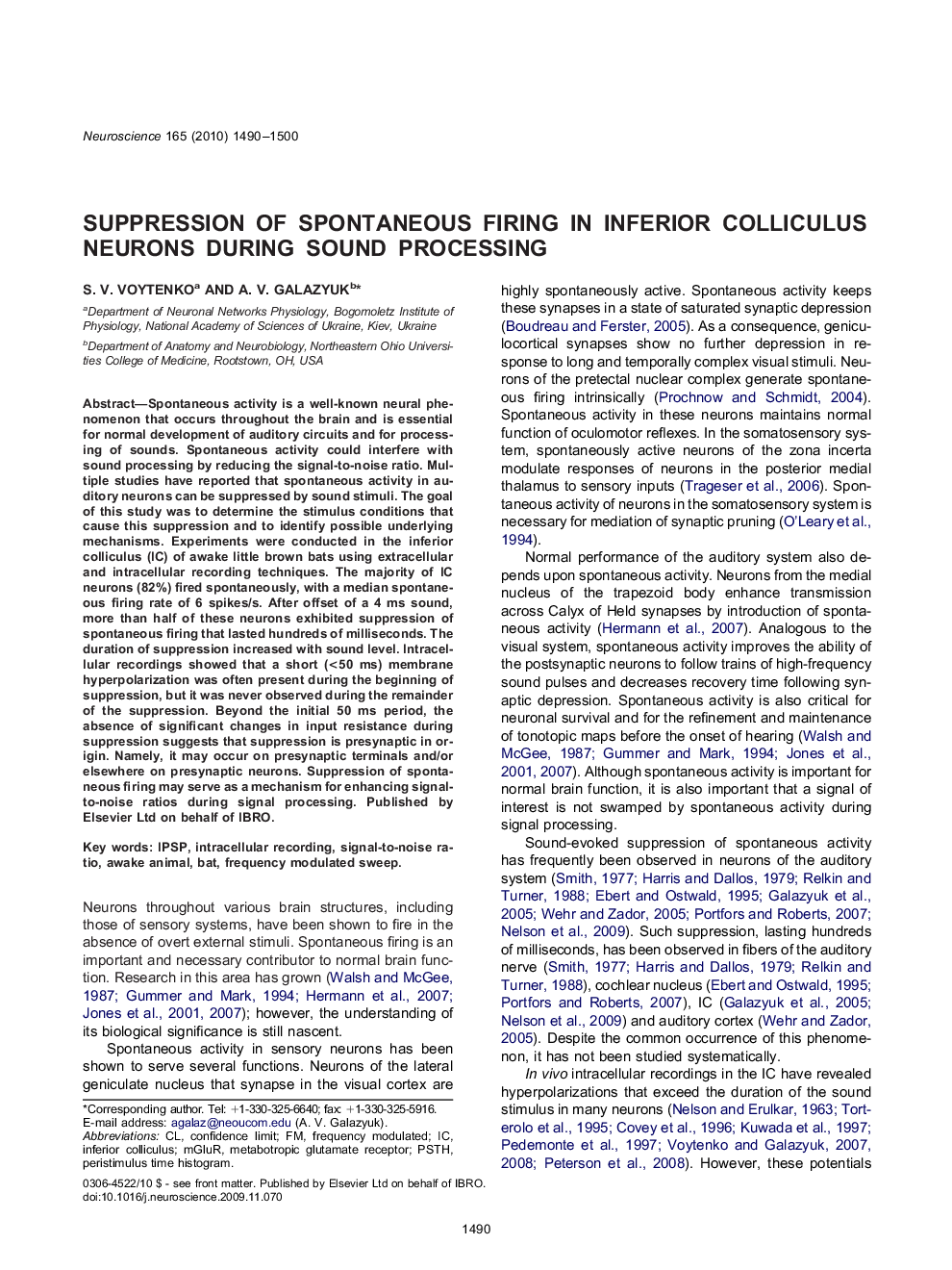| Article ID | Journal | Published Year | Pages | File Type |
|---|---|---|---|---|
| 6277369 | Neuroscience | 2010 | 11 Pages |
Abstract
Spontaneous activity is a well-known neural phenomenon that occurs throughout the brain and is essential for normal development of auditory circuits and for processing of sounds. Spontaneous activity could interfere with sound processing by reducing the signal-to-noise ratio. Multiple studies have reported that spontaneous activity in auditory neurons can be suppressed by sound stimuli. The goal of this study was to determine the stimulus conditions that cause this suppression and to identify possible underlying mechanisms. Experiments were conducted in the inferior colliculus (IC) of awake little brown bats using extracellular and intracellular recording techniques. The majority of IC neurons (82%) fired spontaneously, with a median spontaneous firing rate of 6 spikes/s. After offset of a 4 ms sound, more than half of these neurons exhibited suppression of spontaneous firing that lasted hundreds of milliseconds. The duration of suppression increased with sound level. Intracellular recordings showed that a short (<50 ms) membrane hyperpolarization was often present during the beginning of suppression, but it was never observed during the remainder of the suppression. Beyond the initial 50 ms period, the absence of significant changes in input resistance during suppression suggests that suppression is presynaptic in origin. Namely, it may occur on presynaptic terminals and/or elsewhere on presynaptic neurons. Suppression of spontaneous firing may serve as a mechanism for enhancing signal-to-noise ratios during signal processing.
Keywords
Related Topics
Life Sciences
Neuroscience
Neuroscience (General)
Authors
S.V. Voytenko, A.V. Galazyuk,
